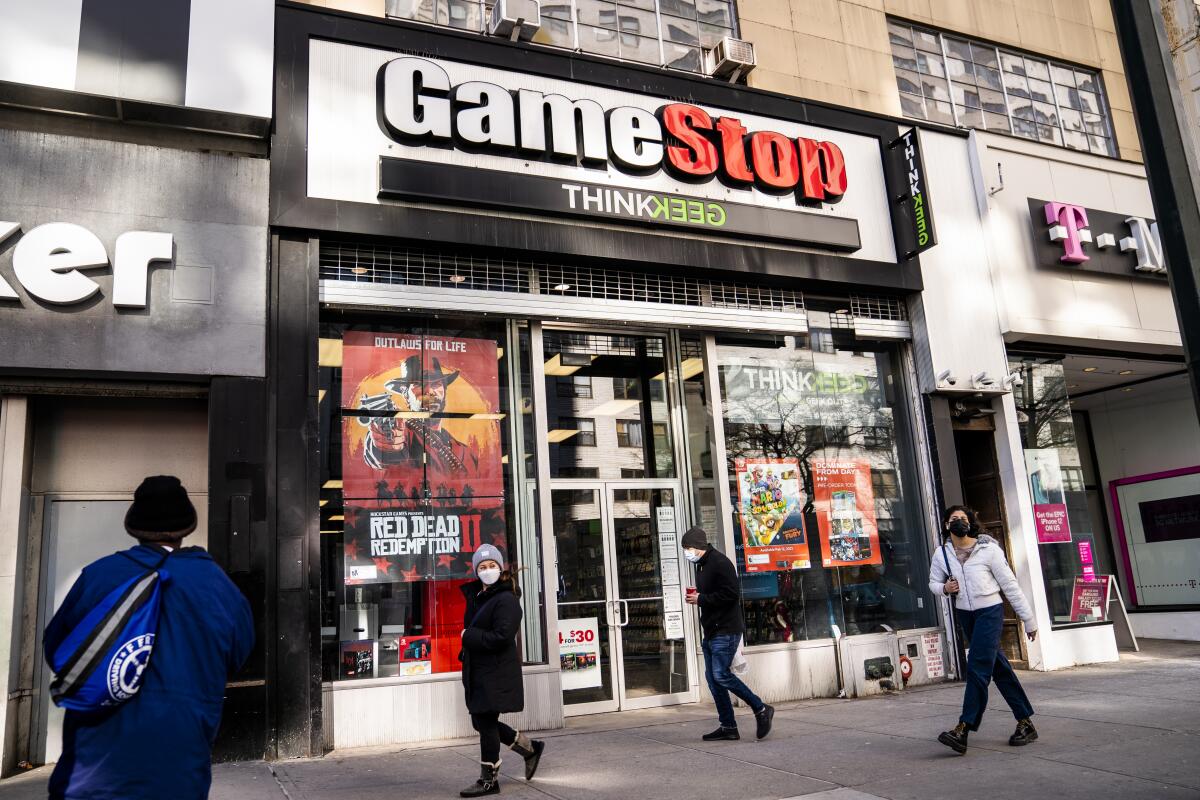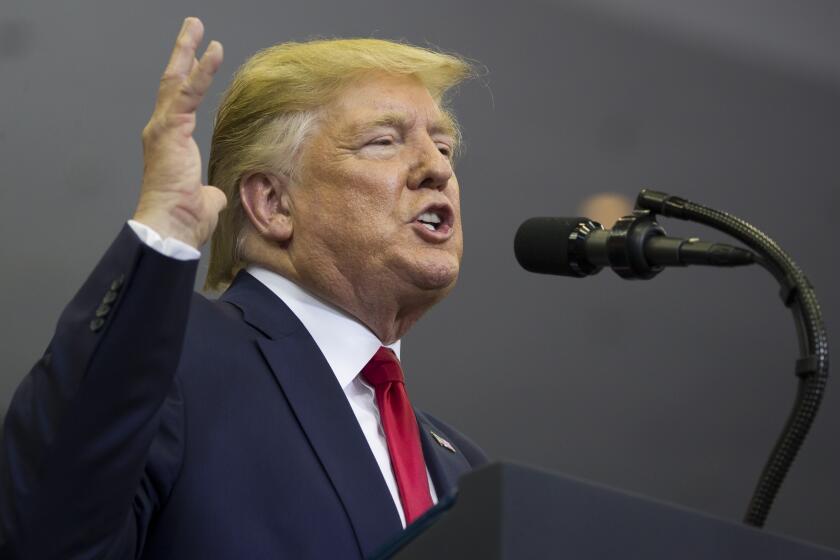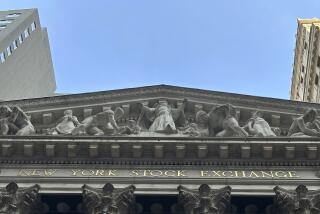Column: Bitcoin, NFTs, SPACs, meme stocks — all those pandemic investment darlings are crashing

- Share via
The finance world, which is constantly on the lookout for rules and laws it can break in the interest of making more money, may have come up against the one law that can’t be broken: the law of gravity.
Over the last few weeks and months, almost every financial asset has come hurtling back to Earth after high-altitude flights.
That includes conventional stocks and bonds, which have spent most of 2022 in the red. But fad assets such as cryptocurrencies, nonfungible tokens (NFTs), blank-check companies (or SPACs), and meme stocks such as GameStop, have taken the biggest hits.
The unicorns are being gelded, reins pulled in, their horns knocked off with a croquet mallet....Realism is rapidly setting in.
— Joshua M. Brown
So too have “story stocks” — those that trade more on popular expectations or grand conjecture than traditional financial analysis.
They include shares in companies that rose by providing goods or services that experienced high demand during the pandemic — exercise bike maker Peloton, for instance, down a sweat-inducing 93% from its peak of $171.09 in January 2021, and teleconference firm Zoom Video Communications, down 85% from its peak of $588.84 in October 2020.
Get the latest from Michael Hiltzik
Commentary on economics and more from a Pulitzer Prize winner.
You may occasionally receive promotional content from the Los Angeles Times.
Then there’s electric-car maker Tesla, perhaps the most prominent story stock in the market today. Tesla shares trade largely on followers’ faith in the wisdom of its chief executive, Elon Musk. In Wednesday’s trading the shares fell $66 to $734, a decline of 41% from their peak of $1,243.49, reached Nov. 4.
Tesla’s price shock could have any of several reasons, as I wrote last month. Among them is concern about Musk’s dalliance with a new plaything, namely Twitter, which he is proposing to buy in part by borrowing against his Tesla shares in a way that could force him to sell some stock if the price continues to fall. (Bloomberg estimated that point at $740, meaning that a margin call may already have been sounded.)
Or the market may finally have recognized that Tesla shares were overpriced in relation to its actual financial prospects.
Put it all together, and investors large and small may have the feeling that they have nowhere to hide.
As Joshua M. Brown of Ritholtz Wealth Management puts it on his blog The Reformed Broker, “The unicorns are being gelded, reins pulled in, their horns knocked off with a croquet mallet.... Realism is rapidly setting in.”
Stock prices aren’t relevant to most people’s lives, so why do we care so much about the markets?
He observes that the buzzwords of just a year ago — “boundless growth, total addressable market, venture-backed, innovative, groundbreaking, web3, transformational, disruptive” — are no longer being uttered with a straight face.
Some of the carnage reflects factors in the overall markets. Investment risks are rising in tandem with rising interest rates, which produce head winds for corporate sales and higher thresholds for corporate profitability.
Financial regulators such as central banks and the U.S. Securities and Exchange Commission are moving to tighten rules on investments that seemed at first to fall outside their jurisdiction, such as cryptocurrencies and SPACs. With social distancing practices easing, investors who once played the markets out of boredom may be turning back to other modes of entertainment.
In the broad market, the declines may simply be part of a natural cycle in which excessive enthusiasm is periodically counterbalanced by gloominess.
The downdraft has reduced some of the stars of the recent fads nearly to persona-non-grata status. One is investment manager Cathie Wood, whose ARK Investment Management was the quintessential vehicle for stakes in new-economy companies. The ARK Innovation exchange traded fund, through which retail investors could piggyback on Wood’s picks, peaked at $132.50 on June 30. Wednesday’s closing price was $36.93.
Since so many of these novel investments were pitched as countercyclical alternatives to conventional stocks and bonds — that they’d save investors from a bear market — it’s proper to examine how they’ve failed to fulfill that promise.
Let’s examine some of them one by one.
Meme stocks
In early 2021, a handful of stocks in failing companies suddenly acquired new life. Movie theater company AMC Entertainment, which had been trading in the low single digits, reached $72.62 on June 2. GameStop, a money-losing mall-based video game retailer that had traded as low as $2.57 in April 2020, hit $483 on Jan. 28, 2021.
A cryptocurrency company thinks it will get a boost from putting its name on the Lakers’ arena. History begs to differ.
GameStop became the emblematic “meme stock,” meaning that it was pumped up by online stock pickers with a story to tell. The central yarn was related to the notion that short sellers, who borrow shares with the intention of selling them and eventually buying them back at a lower price to return to the lenders, are an illegitimate drag on the stock market.
GameStop had been a favorite of the shorts because its bricks-and-mortar business model seemed to leave it with nowhere to go but down.
The meme story held that short sellers were chiefly rich hedge funds vulnerable to a “short squeeze,” in which a stock is driven up, forcing the shorts to buy back in at a higher price, which puts them in the red. That meant that buying into GameStop was a way for the little guy to put it to the Man.
Another point was that GameStop had come under the control of Ryan Cohen, a visionary investor who was going to lead the company into a new-technology nirvana.
None of these claims has panned out. GameStop is still losing money — more in the latest quarter, which ended Jan. 31, $147.5 million, than in any others that followed Cohen’s arrival.
On Jan. 25, I looked at the price of GameStop shares and conjectured that the fad was over. GameStop had closed at $100.15 the day before. On Wednesday, as I type these words onto my screen, the shares closed at $81.33, down more than 13% on the day.
That doesn’t mean GameStop might not still show some life. At the end of March it spurted back up to $165, before resuming its glide path down. That could happen again. But the available retail investment capital to power a sustained move ahead appears to be waning.
That’s because all the meme stocks that rode the popular wave during the pandemic have taken major hits. The index of 37 meme stocks compiled by Bloomberg has reached a record low in the last few days, down 63% from its peak in January 2021.
The army of do-it-yourself small investors who stormed into the market early in 2021, when it seemed to be the only entertainment venue still open, have been ushered to the woodshed. That’s according to Morgan Stanley, which calculates that all the gains made by day-traders since the start of 2020 have now been extinguished.
Their experience is much worse than that of buy-and-hold investors who stayed in Standard & Poor’s 500 stocks during that period — despite its recent swoon, the S&P 500 index is still up by about 21.5% since Jan. 1, 2020.
Robinhood announced plans for an IPO one day after the company settled regulatory charges that should make the average customer or investor wonder.
As for another player in the meme stock game, the zero-commission broker Robinhood Markets, through which many meme investors placed their orders, its price action points to the ebbing of the craze. Robinhood peaked at $85 on Aug. 4, shortly after its initial public offering. Wednesday it fell to $8.15.
Cryptocurrencies
These currencies based on computer algorithms and blockchain technology, which is a way of maintaining data records ostensibly outside the control of central banks and other such institutions, are perennially said to be “moving into the mainstream” of investment and finance.
That trend is almost entirely an illusion. In part that’s because no one has made a sustainable, consistent utility case for crypto — that is, no one has a good answer for the question: “What’s this for?”
Renaming the downtown Los Angeles NBA and NHL playing venue “Crypto.com Arena” doesn’t make crypto legitimate; it’s an advertising ploy by a crypto marketing firm.
Nor does the willingness of Wall Street firms such as JPMorgan Chase & Co. and Goldman Sachs — they’re mostly responding to demands from their wealthy clients to provide them with a way to get in on crypto while it’s still a craze and (they hope) get out ahead of the inevitable crash. The firms are happy to do so and collect fees in the meantime.
The wealthy can afford to take a flier. Not so the average household. As John Reed Stark, former chief of the Securities and Exchange Commission’s office of internet enforcement, warned in a recent interview with Vice, “It’s their financial future, their kids’ future, their family’s future, their house.”
As cryptocurrencies and NFTs gain popularity, addiction specialists are hearing from people whose compulsive trading resembles full-blown dependency.
Fidelity Investments’ idea of allowing people to put bitcoin into their 401(k) retirement accounts has been rightly assailed by the Labor Department, where an official called it the product of “a lot of hype.”
“For the average American, the need for retirement savings in their old age is significant,” Ali Khawar, whose division oversees retirement plans, told the Wall Street Journal. “We are not talking about millionaires and billionaires that have a ton of other assets to draw down.”
It’s always dangerous to mistake marketing for value. For instance, anyone who invested $1,000 in a bitcoin fund — let’s say the ProShares Bitcoin Strategy ETF — on Oct. 28, when Crypto.com premiered its “Fortune Favors the Brave” commercial starring Matt Damon, today would have $468. (Thanks to Jon Schwartz of the Intercept for this useful metric.)
NFTs, SPACs, etc.
Almost every investment idea that seems to make no sense will eventually crash, sometimes falling faster than they rose.
Non-fungible tokens, which are digital representations that are pitched as unique and therefore have the virtue of scarcity, are a good example. NFTs confer no ownership to anything but the digital file, which may be an image of an object that is actually owned by someone else. Someone has parodied the NFT market by purporting to sell NFTs of images of individual Olive Garden restaurants, but it’s the kind of parody that gets at the essential truth of the target.
The NFT market soared on a wave of overheated claims that it would remake the market for creative objects and bring riches to starving musicians and artists. In January, TV host Jimmy Fallon and celebutante Paris Hilton jointly hyped their NFTs on Fallon’s “The Tonight Show.” The market has now crashed.
The SPAC craze may have peaked with Trump’s bizarre pitch for a right-wing media company.
An NFT of the first tweet posted by Twitter co-founder Jack Dorsey (it read: “just setting up my twttr”) was sold to a Malaysian business executive for $2.9 million in March 2021. The owner put it up for sale last month, hoping to collect $50 million. The highest bid was less than $14,000.
Investors are also running away from blank check companies known as special purpose acquisition companies, or SPACs. The heyday for these shell companies, which aimed to raise money, typically by the hundreds of millions, for pools that promised only to merge with another as-yet unidentified company sometime in the near future, seems to have passed. At its peak, it attracted figures such as Donald Trump, which may have led some investors to question its soundness.
Last year the number of SPACs completing deals with target companies nearly tripled over the previous year to 613 and the amount raised in those deals nearly doubled to $162.5 billion, according to the market service SPAC Research. So far this year, only 66 deals have been closed, for a meager $11.5 billion.
Goldman Sachs, Bank of America, Citigroup and other banks are pulling out of the SPAC market or scaling down, Bloomberg has reported. Among the reasons are tightened regulations issued by the SEC, which saw SPACs as tools to circumvent disclosure rules applicable to conventional initial public offerings. Investment market conditions discouraging for IPOs also weigh on SPACs.
The lesson of all these declines becomes clearer with every passing day. Wall Street banks will pump up any investment idea if they think it can feed a demand, no matter how short-lived. But when the fun’s over, the music stops, the merry-go-round grinds to a halt — choose your own metaphor — the people left empty-handed are those who could least afford to play in the first place.
Stark, in his interview with Vice, spoke like a man who has seen all this before, and not once but many times.
“It’s one big giant get-rich-quick scheme,” he said of the universe of novel investment devices. “But the bottom line is, people are investing because they think there’ll be some greater fool to pay more than they paid.”
More to Read
Get the latest from Michael Hiltzik
Commentary on economics and more from a Pulitzer Prize winner.
You may occasionally receive promotional content from the Los Angeles Times.
















